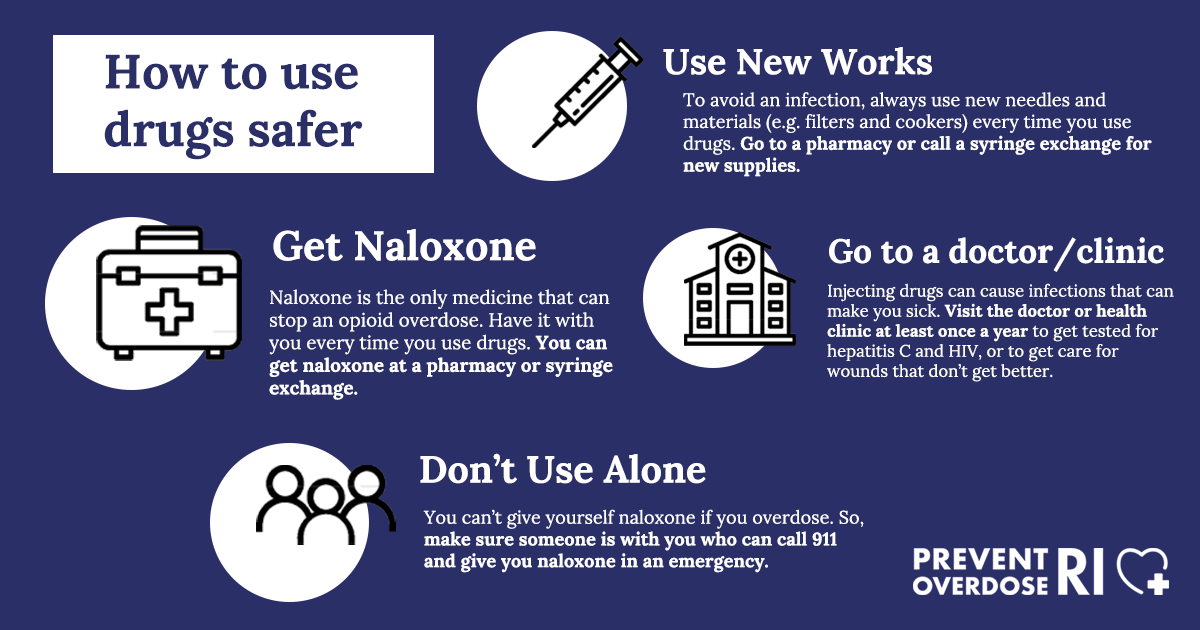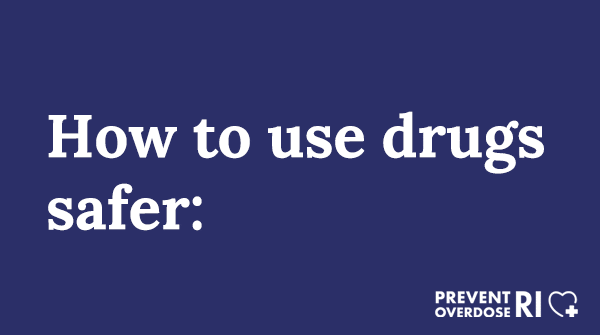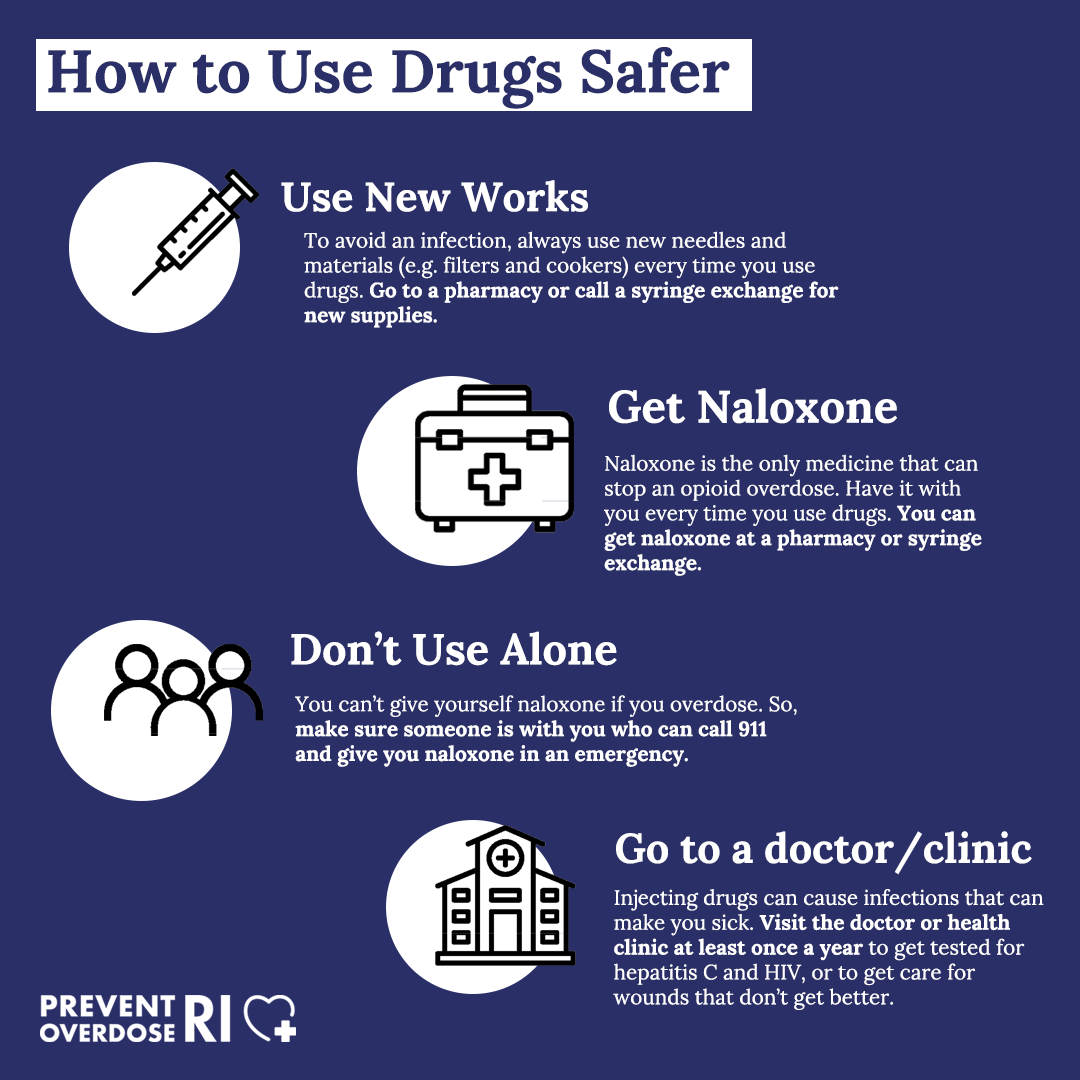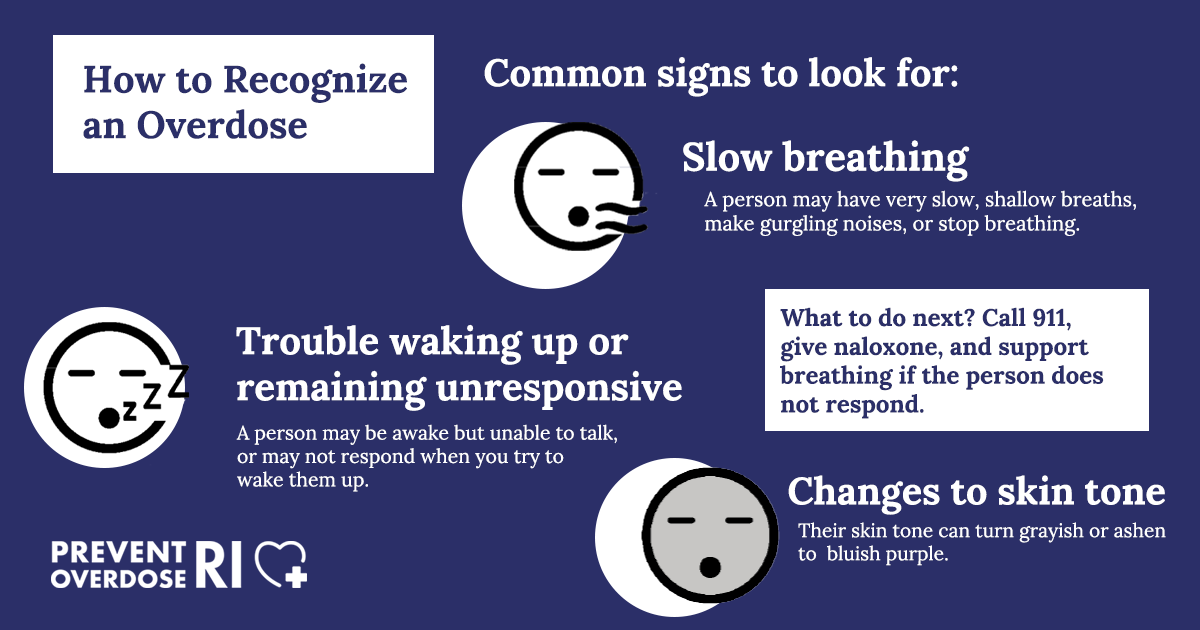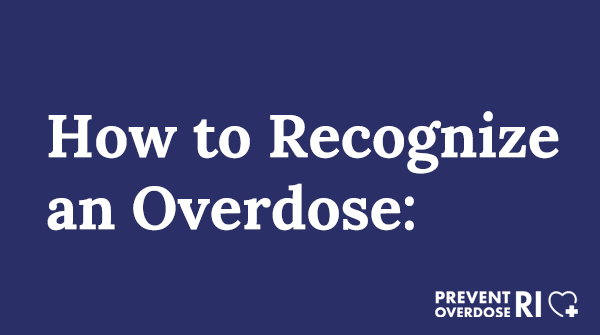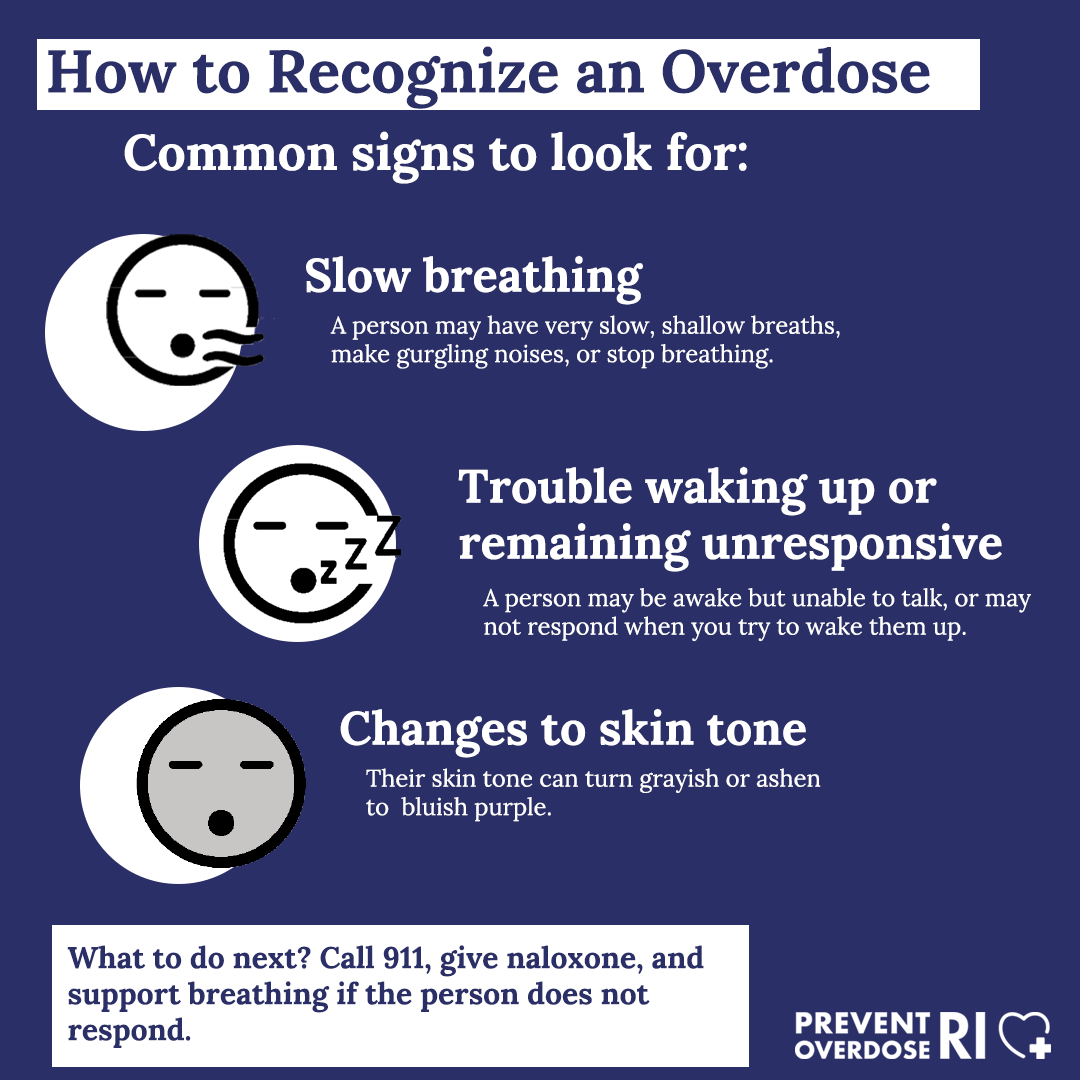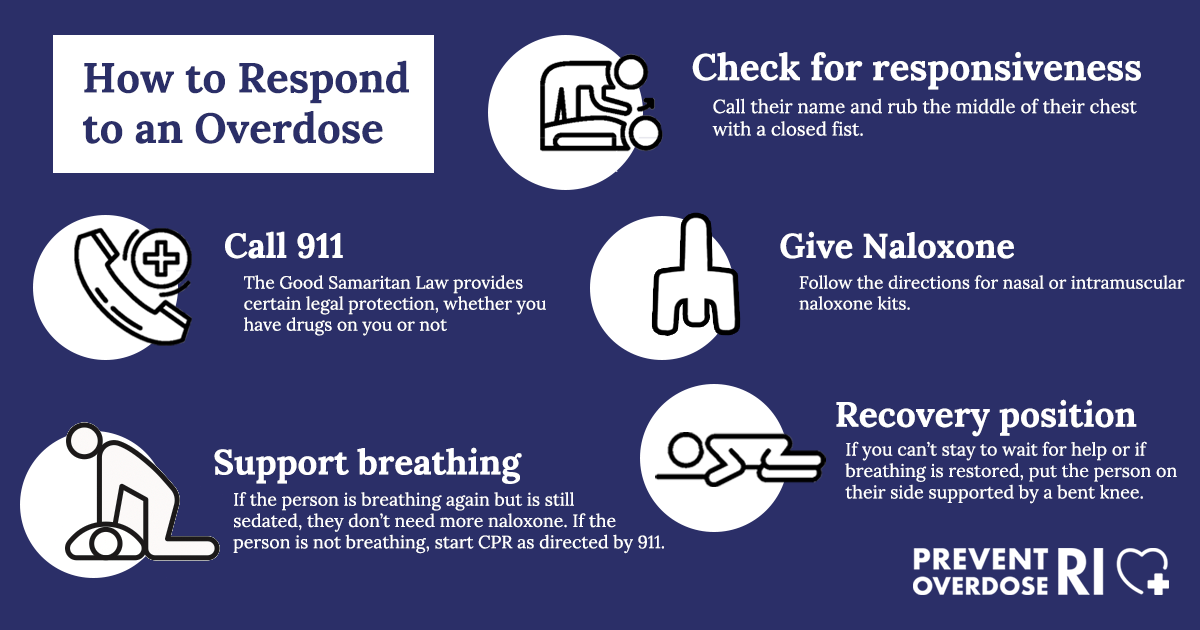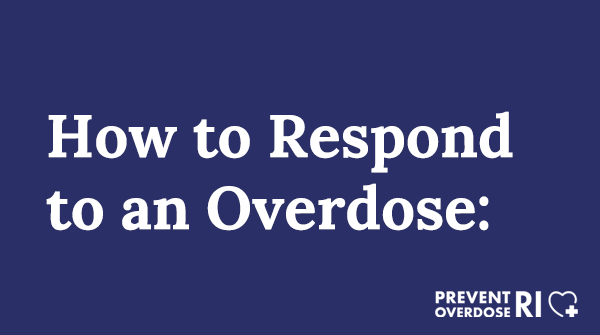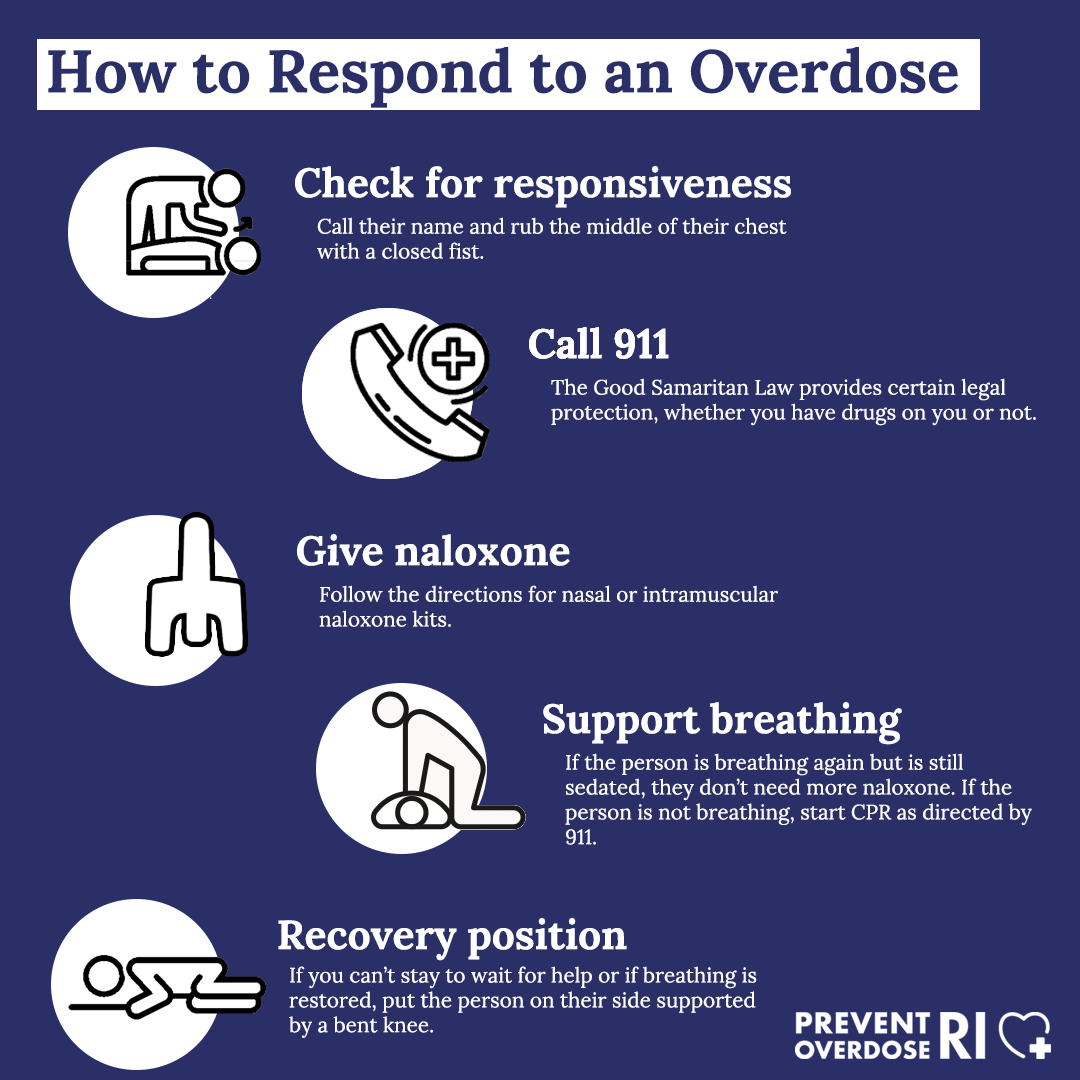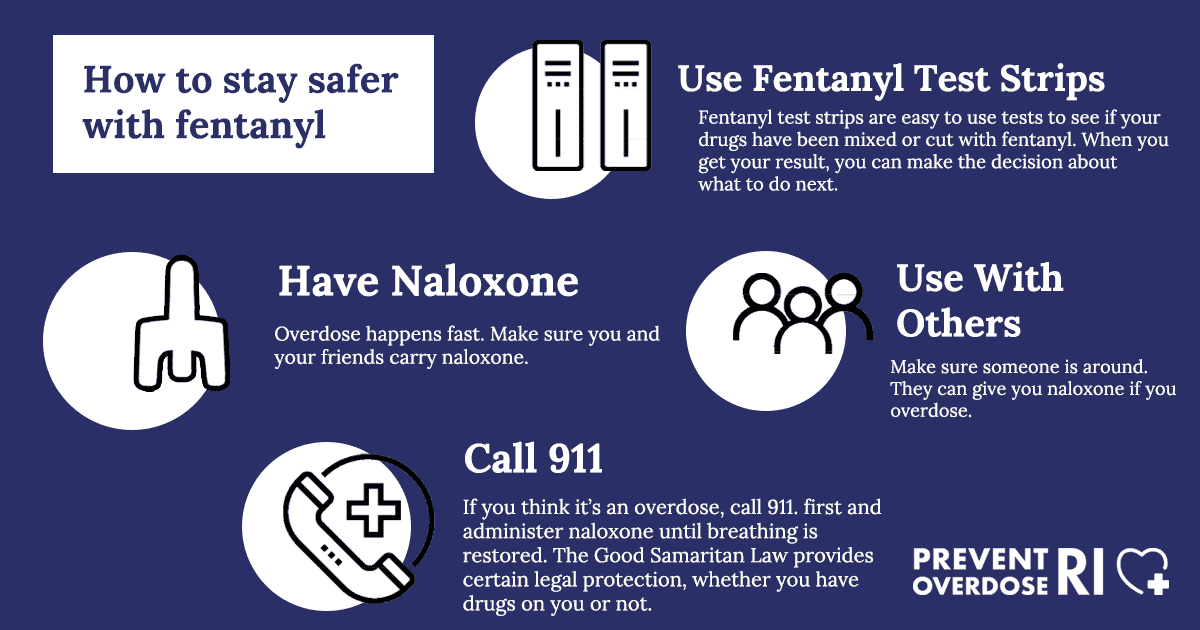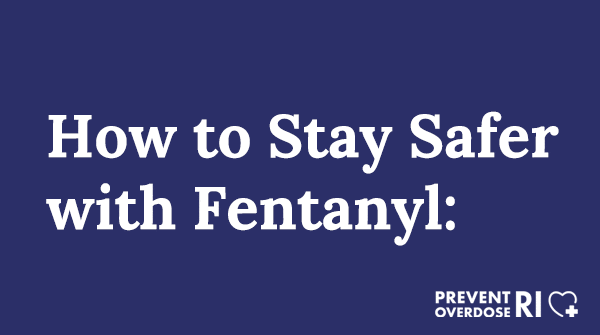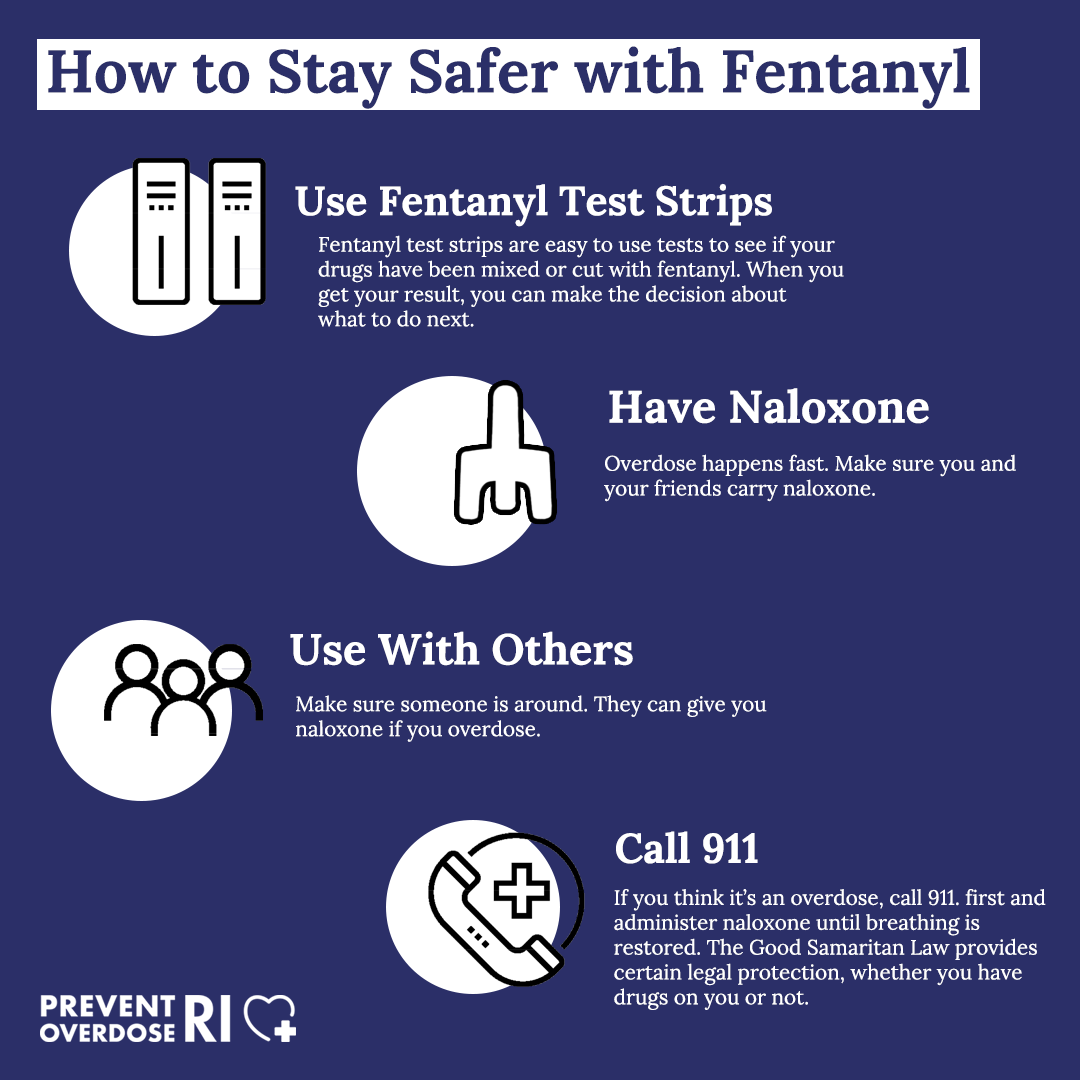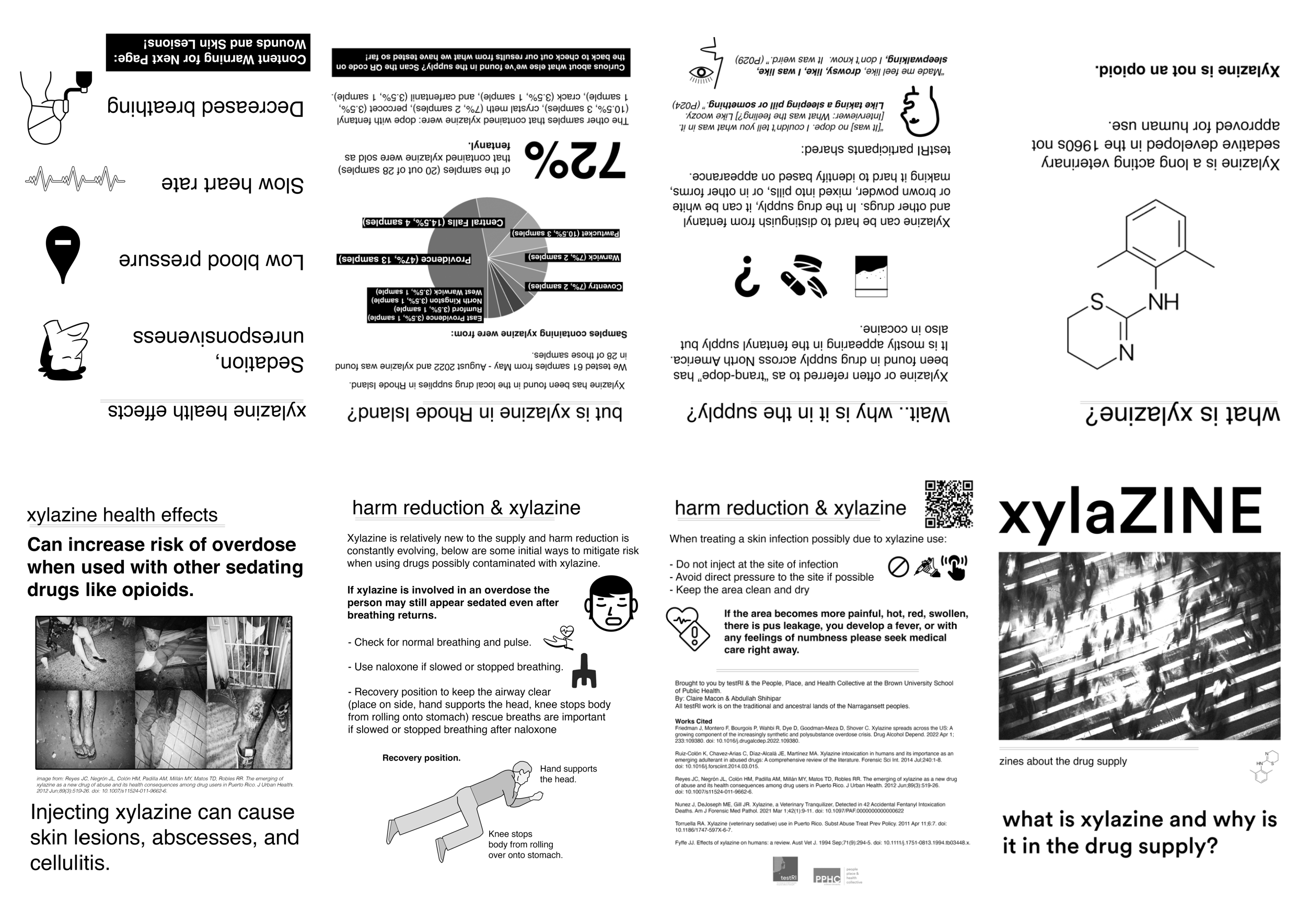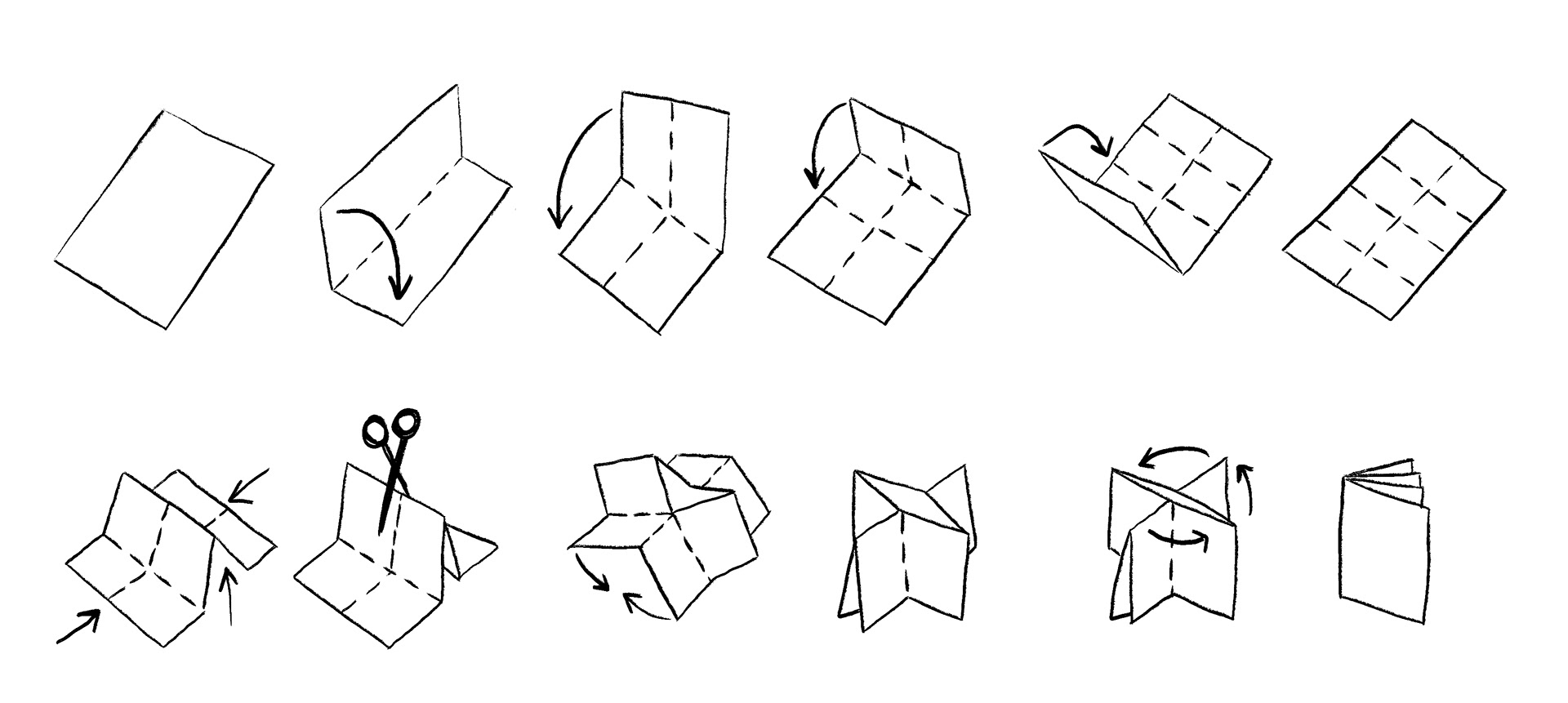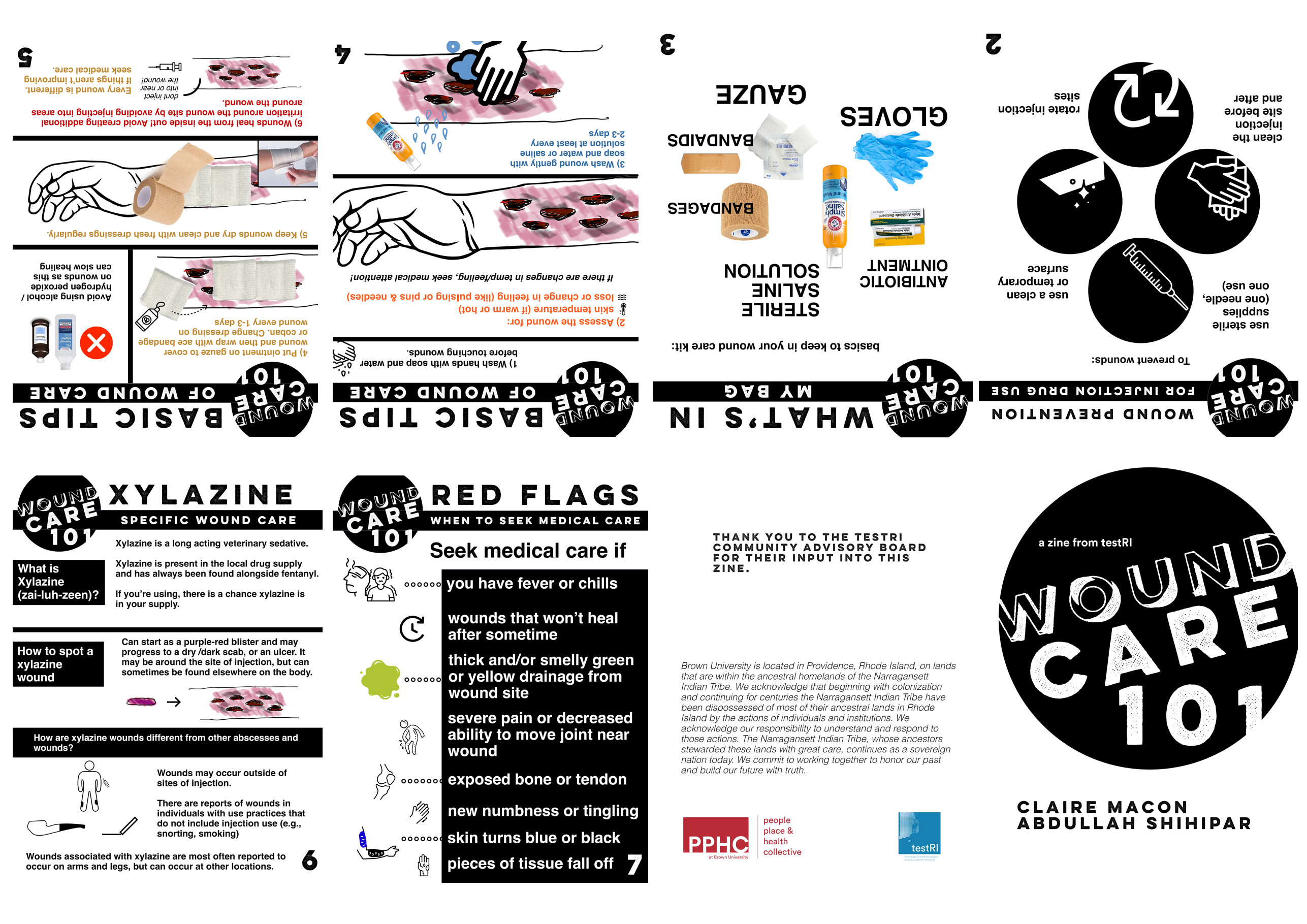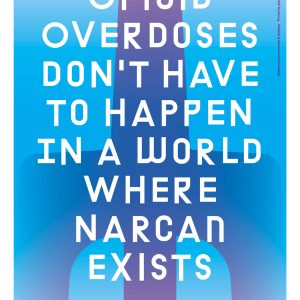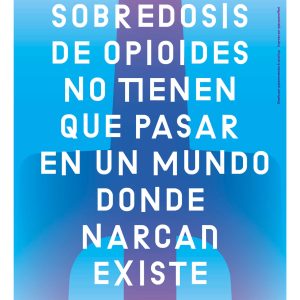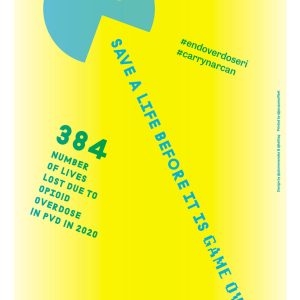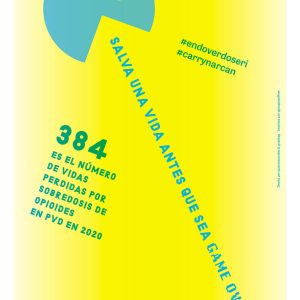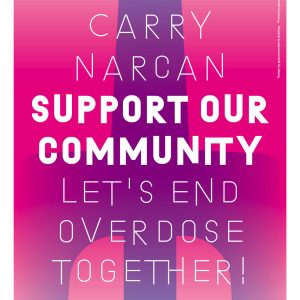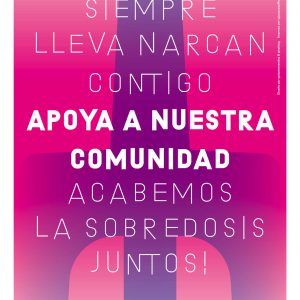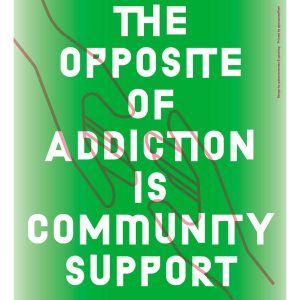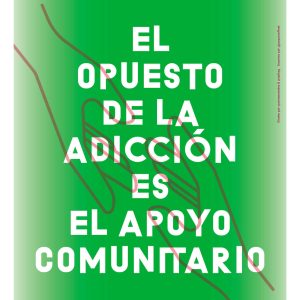Use our graphics to share critical information about drug use and save lives. Our graphics are created in conjunction with public health experts at Brown University and the Rhode Island Department of Health, and focus on medical and public health guidelines on how to stay safe with drug use.
Shareable Social Media Infographics
Each of these topics has shareable graphics for social media platforms like Facebook, Twitter, and Instagram to prevent overdose and save lives.
Harm Reduction Saves Lives graphic by Esther Moon:
Harm Reduction Saves Lives
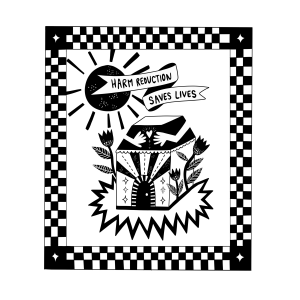
(click for full size)
Sample caption for social media: You might have heard about “harm reduction” in the news lately. So, what is harm reduction? Harm reduction is a set of practical strategies and ideas aimed at reducing negative consequences associated with drug use. In Rhode Island, we have resources available for safer drug use. Learn more at https://preventoverdoseri.org/people-who-use-drugs/
Alternative caption for Twitter: Overdose prevention centers will be a vital part of #RI’s strategy to reduce overdose deaths, save lives, and connect people to essential treatment and recovery support services. Learn more at https://preventoverdoseri.org/overdose-prevention-centers/
What are Overdose Prevention Centers?
Harm reduction can keep us safe
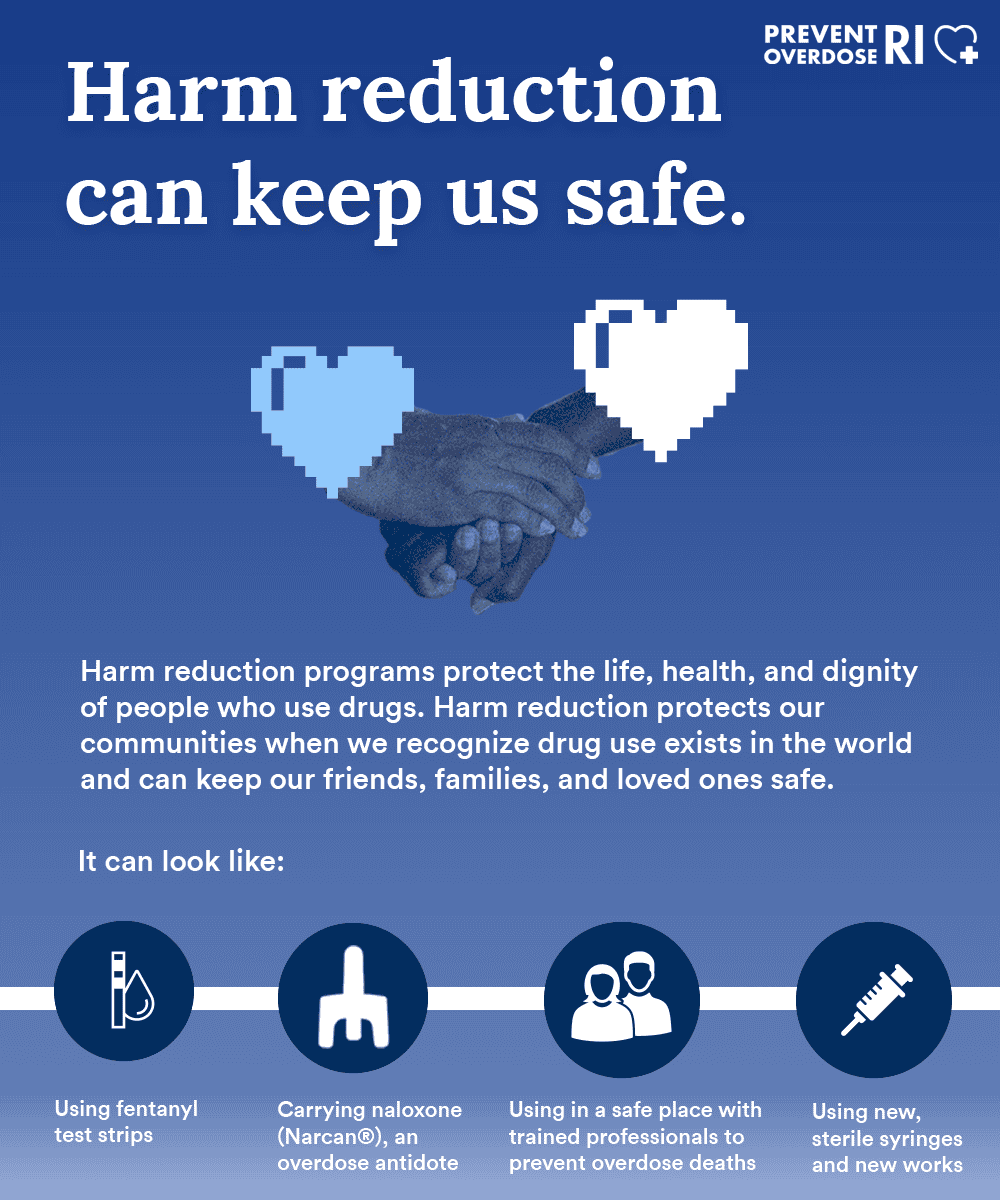
Caption: There are several ways you can stay safe when using drugs: remember to always have naloxone on hand, stay with other people when using, use new works, and visit a doctor or clinic regularly. Learn more at https://preventoverdoseri.org/overdose-prevention-centers/
What does harm reduction look like?
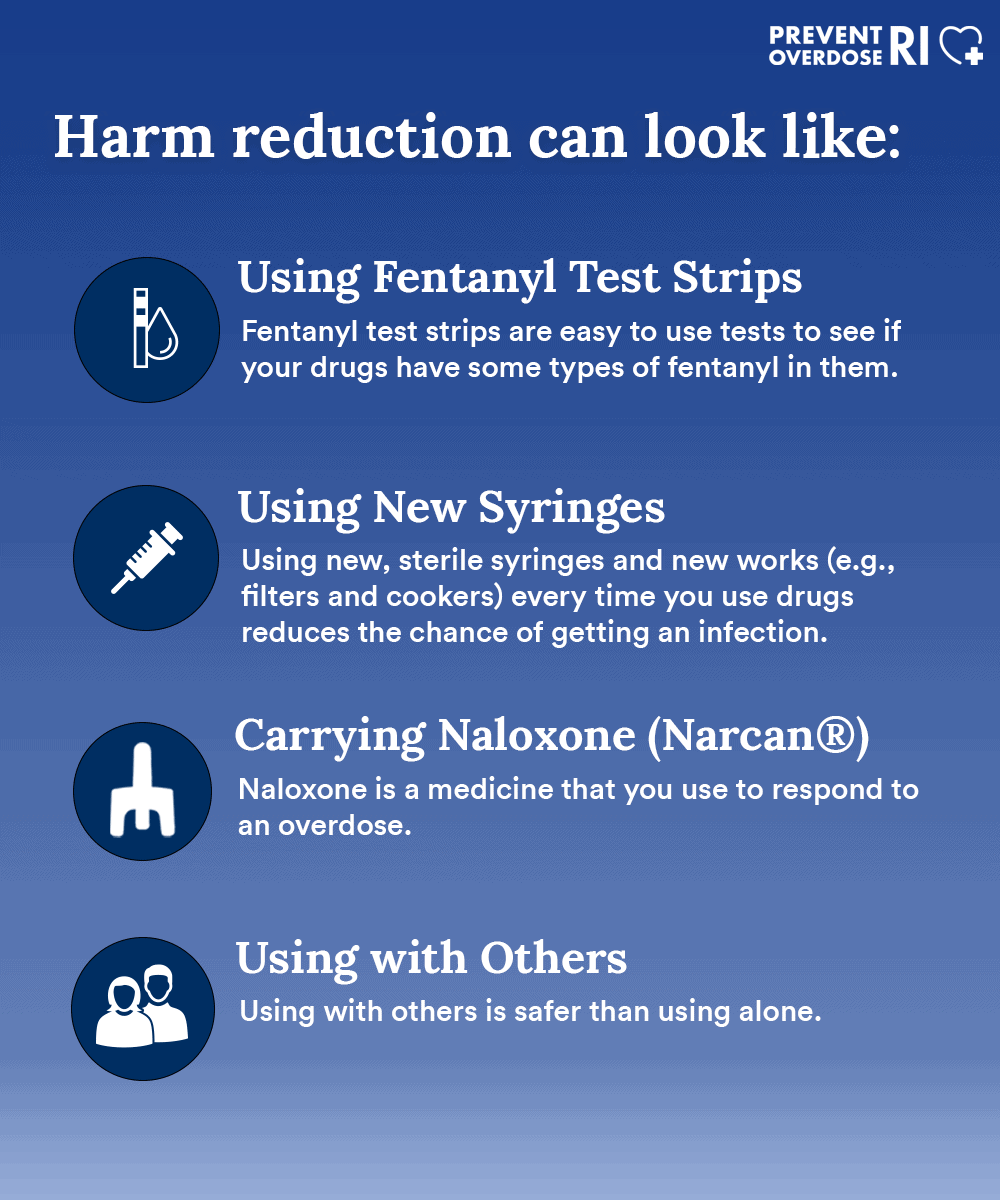
Caption: Harm reduction can look like using fentanyl test strips, carrying naloxone, using with others and using safer smoking supplies, sterile syringes, new works, and other harm reduction tools. All of these steps make drug use safer and can save lives. Learn more at https://preventoverdoseri.org/overdose-prevention-centers/
What are overdose prevention centers?
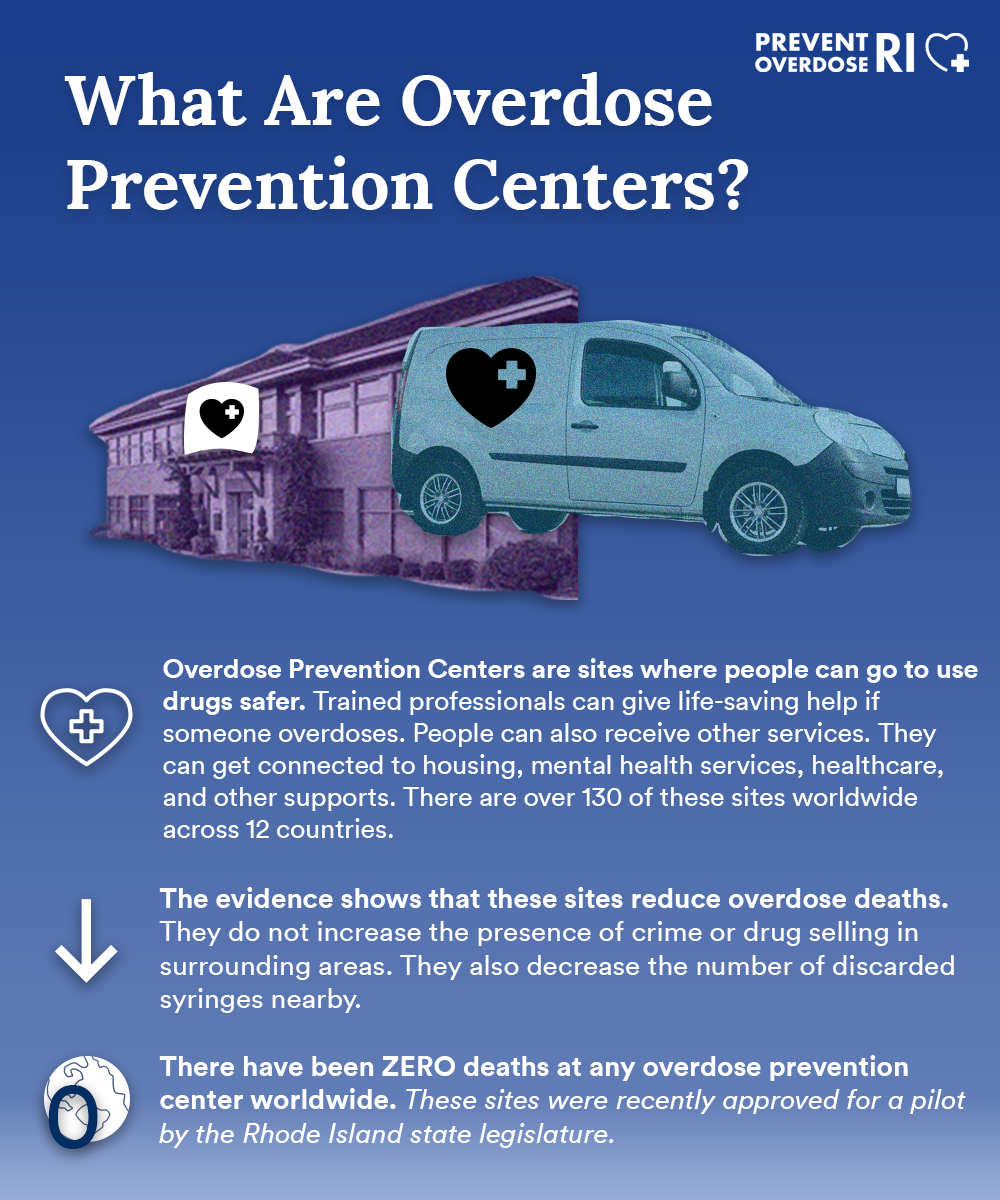
Caption: Overdose prevention centers are places where people can go to use drugs safer. Here, trained professionals will be readily available to monitor drug consumption, give life-saving help if someone overdoses, and support clients. The evidence shows that these sites reduce overdose deaths, do not increase drug use in surrounding areas, and connect people to services. There have been zero deaths at any of these centers worldwide. Learn more at https://preventoverdoseri.org/overdose-prevention-centers/
Harm reduction keeps people alive.
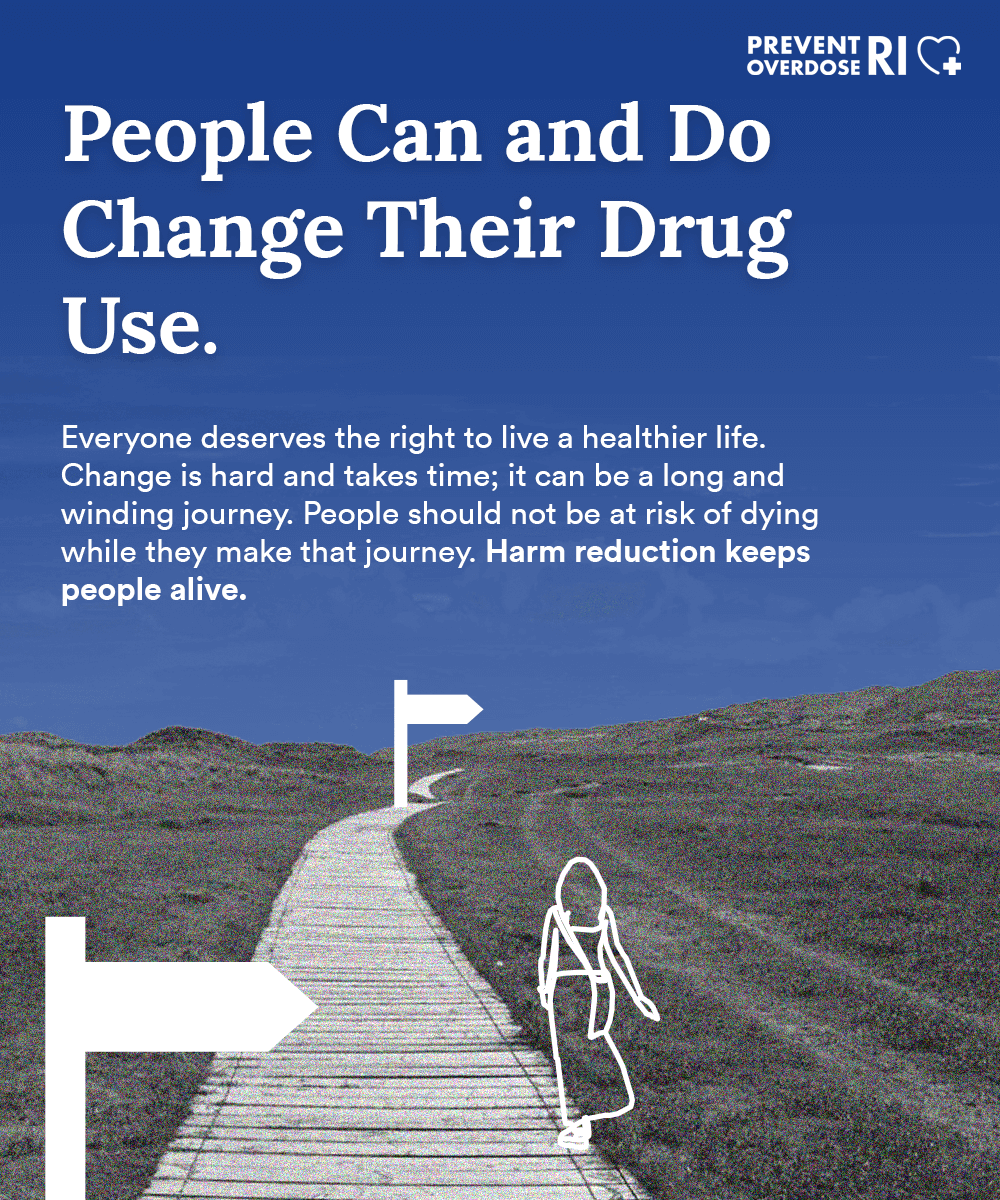
Caption: People can and do change their drug use. Change is hard and takes time, it can be a long and winding journey. People should not be at risk of dying while they make that journey. Harm reduction keeps people alive. Learn more at https://preventoverdoseri.org/overdose-prevention-centers/
How to use drugs safer and recognize and respond to an overdose:
How to use drugs safely
Facebook sample caption: There are several ways you can stay safe when using drugs: remember to always have naloxone on hand, stay with other people when using, use new works, and visit a doctor or clinic regularly. Learn more at https://preventoverdoseri.org/safer-drug-use-practices/
Twitter sample caption: There are several ways you can stay safe when using drugs: remember to use new syringes, always have naloxone on hand, stay with other people when using, and visit a doctor or clinic regularly. Learn more at https://preventoverdoseri.org/safer-drug-use-practices/
Instagram sample caption: There are several ways you can stay safe when using drugs: always have naloxone on hand, stay with other people when using, use new works, and visit a doctor or clinic regularly. Learn more at https://preventoverdoseri.org/safer-drug-use-practices/
How to recognize an overdose
Facebook sample caption: Signs of an overdose include slower breathing, having trouble waking up, or changes to skin tone. Learn more at https://preventoverdoseri.org/respond-to-overdose/
Twitter sample caption: Signs of an overdose include slower breathing, having trouble waking up, or changes to skin tone. Learn more at https://preventoverdoseri.org/respond-to-overdose/
Instagram sample caption: Signs of an overdose include slower breathing, having trouble waking up, or changes to skin tone. Learn more at https://preventoverdoseri.org/respond-to-overdose/
How to respond to overdose
Facebook sample caption: When responding to an overdose, there are several things you can do. Try to wake the person up, but you can also call 911 and administer naloxone. You can also place them in a recovery position. Learn more at https://preventoverdoseri.org/respond-to-overdose/
Twitter sample caption: When responding to an overdose, there are several things you can do. Try to wake the person up, but you can also call 911 and administer naloxone. You can also place them in a recovery position. Learn more at https://preventoverdoseri.org/respond-to-overdose/
Instagram sample caption: When responding to an overdose, there are several things you can do. Try to wake the person up, but you can also call 911 and administer naloxone. You can also place them in a recovery position. Learn more at https://preventoverdoseri.org/respond-to-overdose/
How to stay safe with fentanyl
Facebook sample caption: There are steps you can take to stay safe with fentanyl. Always have naloxone on hand, use with others around you, and call 911 if you suspect an overdose. Learn more at https://preventoverdoseri.org/fentanyl/
Twitter sample caption: There are steps you can take to stay safe with fentanyl. Always have naloxone on hand, use with others around you, and call 911 if you suspect an overdose. Learn more at https://preventoverdoseri.org/fentanyl/
Instagram sample caption: There are steps you can take to stay safe with fentanyl. Always have naloxone on hand, use with others around you, and call 911 if you suspect an overdose. Learn more at https://preventoverdoseri.org/fentanyl/
Harm Reduction Zines
How to Assemble a Zine
Check out these naloxone posters designed by local artists at Counterform.
Community Naloxone Posters
Informational videos
Videos for Emergency Department Providers
Words Matter – How providers speak to patients with substance use disorders is important. The language used while talking to or about patients can reinforce the stigma that patients face. Use person-first language and avoid stigmatizing words. Watch this short educational video to learn more about how you can change your language to improve patient care.
Naloxone – Naloxone, also known as Narcan, is a life-saving medicine that can reverse an opioid overdose. Naloxone is safe, works, and having it at home does not make someone more likely to use opioids. Easy to use, you can obtain Naloxone from the emergency department or your local pharmacy.
Harm Reduction Strategies – Harm reduction recognizes that people aren’t perfect. From naloxone, buprenorphine, and disposal of sharps, harm reduction strategies recognize that people may continue to use drugs, but that options exist to keep them safe.
Peer Recovery Support Specialists – Peer Recovery Support Specialists, also known as Coaches, play an invaluable role in recovery. They are people who have been successful in the recovery process and who help others experiencing similar situations. Peer recovery coaches help people become and stay engaged in the recovery process and reduce the risk of recurrent use.
Medication for Opioid Use Disorder – Buprenorphine is an important medication that can be used to treat opioid use disorder. Initiating buprenorphine in the Emergency Department helps patients engage in treatment and reduce their risk of an opioid overdose. Watch this short educational video on how you can start a patient on buprenorphine and call the buprenorphine hotline at 401-606-5456 if you have any questions.
Fact Sheets and Flyers
These fact sheets/flyers can be shared online with community members or downloaded and printed for in-person distribution.
- How to recognize and respond to overdose: English | Español
- How to stay safer with xylazine (palm card): English and Español
- Four ways to stay safer with xylazine: English and Español
- How to stay safe with fentanyl: English | Español | Português
- How to use drugs safely: English | Español | Português
- Parents and Teens: English | Español | Português
- Teachers and Students: English | Español | Português
- Three Ways to Get Naloxone: English | Español
Helpful Links and Resources
These links can be shared online to provide quick information about overdose prevention resources on PreventOverdoseRI.org.
- People can visit PreventOverdoseRI to order free naloxone and safer drug use supplies, recovery support services, and naloxone training. Information is available in English and Spanish. PreventOverdoseRI.org/Get-Naloxone/
- Visit PreventOverdoseRI to learn about overdose prevention resources to help you, your family, and loved ones stay safe during the coronavirus outbreak, also known as COVID-19. PreventOverdoseRI.org/COVID-19/
- RIDOH has a podcast! Listen to Public Health Out Loud for a deep-dive on public health topics. Find overdose-related episodes here.

